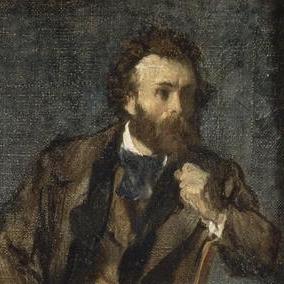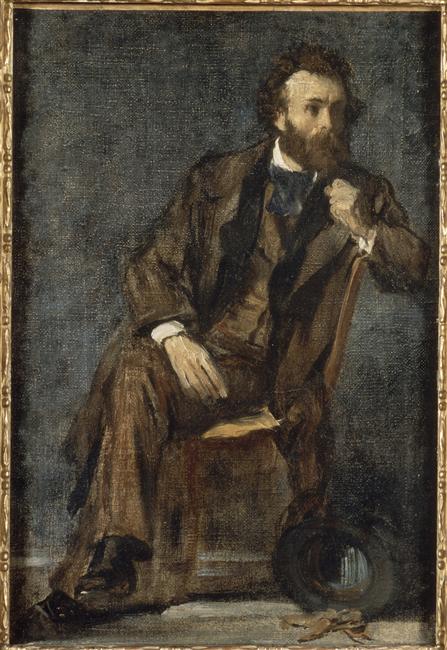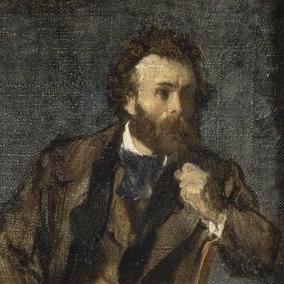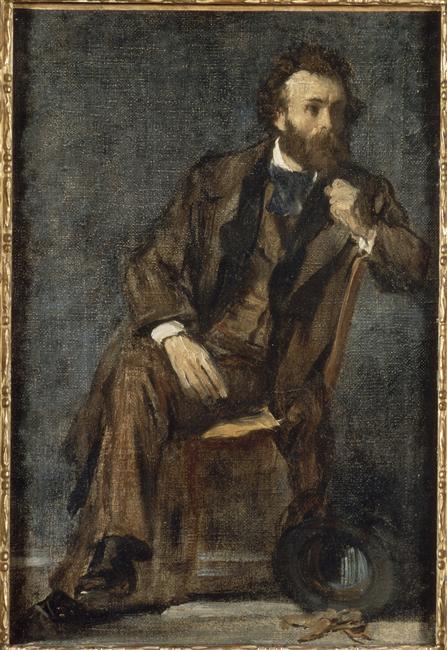Choix d'œuvres
Portrait of Gustave Moreau
Edgar Degas met Gustave Moreau in Rome in early 1858. They met up again in Florence a few months later, and together they visited Siena and Pisa from Tuesday 1st to Friday 4th March 1859. It was during this time that, at the age of 24, Degas undertook his ambitious Portrait la Famille Bellelli (Paris, Musée d’Orsay, R.F. 2210) and completed Dante and Virgil (Private collection) into which, on a symbolic level, he seems to have transposed the elements that linked him to Moreau whom he considered his mentor.
His influence is clear in works such as: The Daughter of Jephtah Semiramis building Babylon and Young Spartan Girls Provoking the Boys. But when we look at a painting such as Moreau’s Hesiod and the Muses (MGM. Cat. 872), the influence of the “disciple” over the Master is no less evident. Moreau left three portrait drawings of Degas, that can all be dated to the visit to Italy. In turn, Degas’ drawing, from around 1861-1862, portrays Moreau as a dandy, nonchalantly seated on a chair, having thrown his top hat and gloves down by his feet, his left fist clenched in a gesture expressing his determination. As the years went on, Degas’ career took a different aesthetic direction, quite separate from that of the Master Symbolist.
Their differences are well summarised in this comment by Degas reported by Paul Valéry: “He would have us believe that the Gods wore watch chains” and in this exchange of cutting replies: “Do you plan to renew art through dance?” [and Degas’ riposte] “And do you think you can revitalise it with jewellery?” However, as they moved in the same circles, the two painters continued to come into contact with each other, if only at the Salon of Hortense Howland, their mutual friend, who lived at 16 rue de La Rochefoucauld.
On 18 April 1898, Degas went to the funeral of his childhood friend with Count Robert de Montesquiou, and told him: “Moreau was one of those men who always begins by drawing his feet in, for fear that you might step on his toes”. Finally, Paul Valéry records that it was a visit to the Musée Gustave Moreau that dissuaded Degas from building one for his own Oeuvre. He allegedly exclaimed: “How truly sinister… you would think you were in a mausoleum […] All of those paintings jammed together make me think of a Thesaurus, a Gradus ad Parnassum (textbook of classical prosody”).




